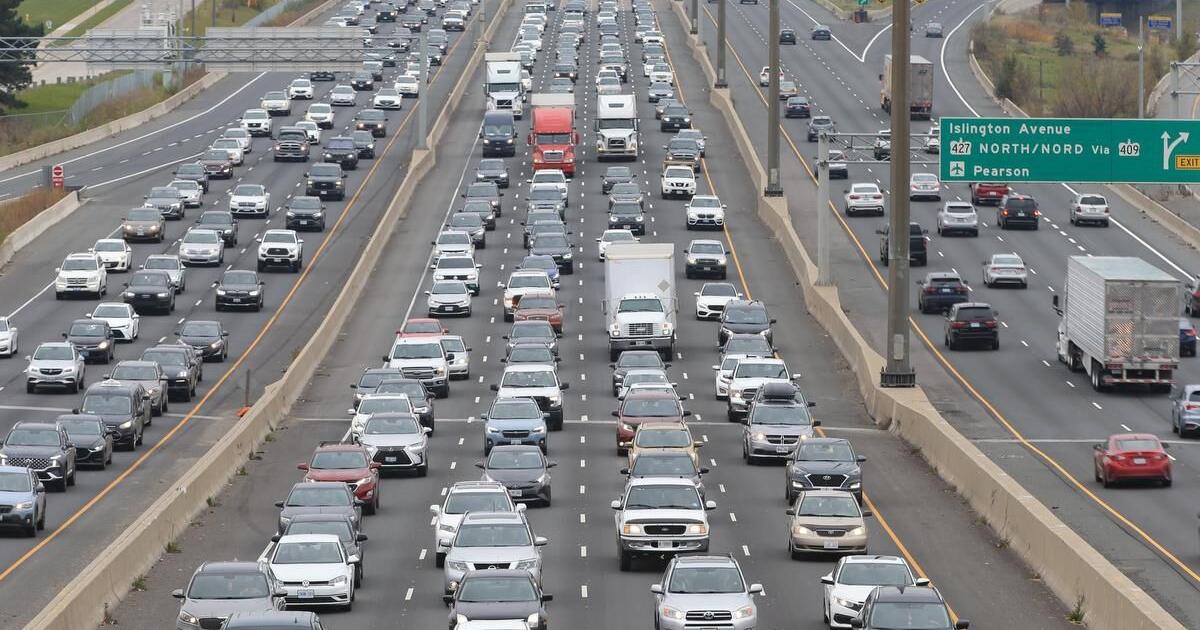pt 2..
The report concludes that should the GTA West corridor be cancelled, alternates should be pursued including 407 truck lanes (reasonable, if challenging to implement due to the 407ETR contract), congestion pricing (Ha! Good luck!), and lowered growth scenarios (not happening, in fact the opposite is happening).
The studies conclusion is that the highway should be cancelled and the big move to replace it is to simply let less people move to the province. Not sure how that works.
This is detailed further in their conclusion and recommendations:
“First, the Panel concluded that highway expansions and extensions that are completed, planned or under way will provide travel time benefits that are approximately equal to those anticipated from the EA’s recommended new highway corridor.”
Not sure I understand this – the other highway widenings planned provide benefits, yes, but the GTA west provides even greater benefits. The GTA West EA identifies pretty extensive needs illustrating that more interventions are needed than simply widening existing corridors, and these corridor widenings are largely already occurring irrespective of the 413. Later on in the report the panel also states that widening only was not assessed as a separate alternative in the GTA West EA, which is plainly false. You can review the various options, including highway widenings only, here:
The highway widening only alternative is clearly shown on page 26 of the PDF. There are a lot of other, smaller errors in the report as well I’ve noticed with only a quick skim over.
“Second, consistent with provincial policy that requires the optimization of existing infrastructure, the Panel found that congestion pricing as a demand management tool on the existing highway system appears capable of delivering travel time benefits that are equal to or greater than the proposed new GTAW corridor. Using current MTO modelling, the Panel’s forecasts predict travel time savings associated with tolling either Hwy 401 or all GGH multi-lane highways that are, respectively, from three times greater to more than 10 times greater than those of the new GTAW corridor.
The Panel recognizes that these two tolling scenarios will have significant equity implications. More intermediate scenarios, with fewer equity implications, include: a) tolling one lane on all GGH multi-lane highways, or b) tolling only Hwy 401’s express lanes. These scenarios would also provide travel time savings, approximately equal to those anticipated from the new GTAW corridor.”
This is all well and good, but extremely unlikely and not a practical alternative politically. It’ll just never fly and would be unprecedented on a global scale. As the report mentions elsewhere, it also has serious equity issues and wouldn’t produce as much economic benefits as other congestion reduction methods as it will reduce congestion by pricing trips out of existence. I’m not sure that’s as conductive.
“Third, providing truck priority on Hwy 407 through additional highway capacity or subsidy (e.g., trucks would pay no toll) would deliver travel time benefits that are similar to the new GTAW corridor. Such opportunities, however, should be viewed cautiously, given that the Panel did not examine the physical limitations in the right-of-way available in the Hwy 407 corridor, or barriers to expanding Hwy 407 beyond the 10-lane limit specified in the current 407 ETR legislation and agreement. “
This is the most actually practical alternate solution and even then the report cautions it as it hasn’t passed even a basic feasibility test.
“Fourth, alternate land use and growth scenarios appear to impact transportation system performance, including travel time savings. For example, the Panel modeled a scenario with slower growth and more compact land use patterns than those forecast in the Growth Plan (2006), and the scenario resulted in shorter travel times. ….. As noted earlier, forecasts prepared in 2017 by the Ministry of Finance suggest slower population and economic growth in Ontario to 2040. The Panel’s results do not separate the independent effects of slower growth from compact land uses in analyses, but the Panel believes that these findings merit more attention.”
No sh*t, less people living in the GTA will result in less congestion. What a non-answer cop out, and it’s completely contrary to what the GTA has been experiencing for the last 6 years. More compact development can also absolutely help I’m sure, but the way they have assessed it isn’t independent of the slower growth scenario that the 2017 Growth Plan had that has since been reversed in the 2019 Growth Plan.
The report also recommends integrating transportation and land use planning at the provincial level more, as it’s currently largely split into 3 different silos right now (Metrolinx for transit, MTO for highways, and MMAH for land use), which I agree is an appropriate response. This is a good needs identification, though I don’t believe it justifies dropping the 413 plan on it’s own.
And finally, the real money quote of the report is here:
“Through comments received during public consultation and a review of the many forward-looking aspects of our mandate, the Panel believes that there is a better way to address transportation issues in the GTAW, and more broadly across the Greater Golden Horseshoe. The Panel concludes that the bigger picture (i.e., the contribution of transportation projects to broad public policy goals such as mitigating climate change, testing alternatives across modes, and assessing the robustness of actions with respect to uncertainty) can best be addressed through the development of an integrated multi-modal regional transportation plan.”
i.e. – we think the highway should be cancelled because a bunch of environmentalists showed up at public consultations and made a stink, and we should continue to let the GTA grow while we subject ourselves to another decade of “study” while building nothing, following decades of “study” and building nothing.





